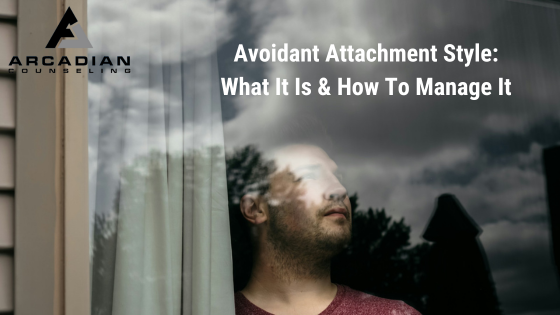Does it seem like you often pull away from relationships when they start to feel too close? Maybe you value your independence so much that the idea of relying on someone else feels uncomfortable or even threatening. If this sounds familiar, you might have an avoidant attachment style.
What Is Avoidant Attachment Style?
Avoidant attachment is one of four attachment styles identified in attachment theory, a psychological framework that explores how our early relationships with our parents (or caregivers) shape our patterns of connection in adulthood. People with avoidant attachment tend to prioritize self-reliance and often struggle with emotional intimacy. While independence is a valuable trait, those with this attachment style may inadvertently push others away, fearing vulnerability or rejection.
Avoidant attachment isn’t about a lack of interest in relationships – rather, it’s a defense mechanism. People with this style often suppress their emotional needs because they likely learned in childhood that depending on others might lead to disappointment or hurt.
How Does Avoidant Attachment Develop?

Avoidant attachment usually originates in childhood. If your parent was emotionally unavailable, dismissive, or overly critical, you likely learned to minimize your emotional needs as a way to cope. For example, if your attempts to seek comfort from your parents during times of distress were met with rejection or indifference, you learned to adapt by becoming self-reliant and emotionally distant.
Common experiences that contribute to the development of an avoidant attachment style:
- Inconsistent Caregiving: A parent or caregiver who sometimes meets a child’s needs but is often emotionally unavailable can lead the child to doubt whether seeking comfort is worthwhile.
- Dismissive responses: If a caregiver consistently downplays a child’s emotions or teaches them to “toughen up,” the child might internalize the belief that showing vulnerability is a weakness.
- High expectations for independence: Some children are encouraged to be independent at an early age, which can instill a belief that self-sufficiency is the only safe option.
These patterns, while protective in childhood, often create challenges in adult relationships. The strategies that helped a child survive emotionally might no longer serve them when deeper emotional connections are required for adult relationships.
Signs of Avoidant Attachment Style in Adulthood

Common signs of Avoidant Attachment Style in adults:
- Difficulty expressing emotions or discussing feelings
- Discomfort with vulnerability and emotional closeness
- A strong desire for independence and self-sufficiency
- Pulling away or shutting down during conflicts
- Viewing others as overly needy or clingy
- Avoiding deep emotional connections or commitments
Recognizing these tendencies in yourself is important in order to gain insight into how you relate to others.
Coping with and Managing Avoidant Attachment

The good news is attachment styles are not set in stone. With self-awareness and intentional effort, you can learn to develop healthier ways of connecting with others while still maintaining your independence. Here’s some strategies to help:
- Understand Your Patterns: Begin exploring your thoughts and behaviors in relationships. Do you tend to withdraw when someone gets too close? Do you avoid asking for help, even when you need it? Journaling or talking with a therapist is a great way to help uncover these patterns.
- Practice Vulnerability: Vulnerability can feel scary, but it’s essential for forming meaningful connections. You can start small by sharing a personal story with a trusted friend or express your feelings in a low-stakes situation. Over time and with practice you’ll find that vulnerability strengthens relationships rather than weakening them.
- Set Realistic Expectations: If you fear being overwhelmed in relationships, set boundaries that allow you to feel safe while still fostering closeness. Communicate your needs openly, such as needing time alone to recharge, without shutting others out completely.
- Therapy: A well-trained therapist can help you to explore your attachment style and develop healthier patterns. Therapists trained in attachment theory or emotionally focused therapy can be especially helpful.
- Cultivate Secure Relationships: Surround yourself with people who respect your boundaries and value emotional connection. Securely attached individuals can serve as role models and help you feel safer in relationships.
A Note From Arcadian
Avoidant attachment isn’t a flaw or a failure – it’s a survival strategy developed under less-than ideal circumstances. By understanding its roots and how it manifests, you can take steps to build healthier, more fulfilling relationships. Remember, you don’t have to sacrifice your independence to form meaningful connections – even though it may feel like it. With practice and support, it’s possible to balance both and thrive in your relationships. You don’t have to go it alone either. If you’re struggling to manage how you show up in relationships, find an awesome therapist you like and trust to help.
James Killian, LPC is the Principal Therapist & Owner of Arcadian Counseling in Greater New Haven, CT where they specialize in helping over-thinkers, high achievers, and perfectionists reduce stress, increase fulfillment and enhance performance so they can move From Surviving To Thriving.

